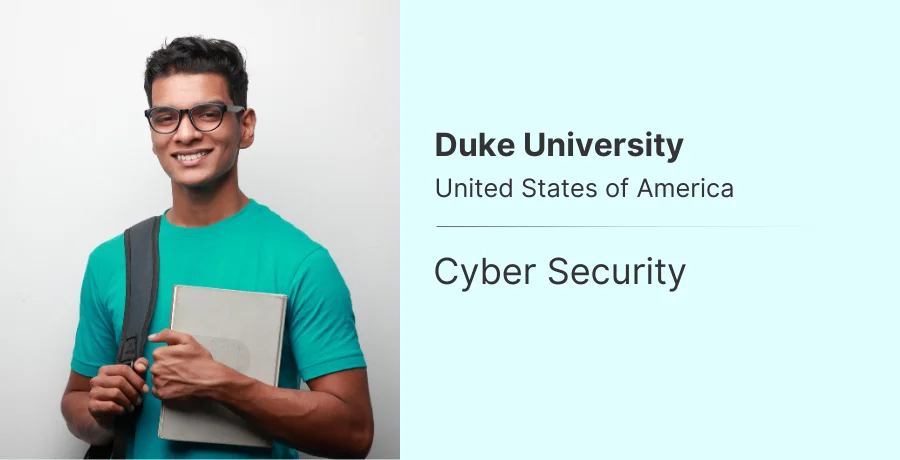University of Hawai'i at Manoa Highlights
The University of Hawai'i at Manoa (UH Manoa) is a premier institution established in 1907. Known for its diverse and inclusive environment, UH Manoa offers a wide range of undergraduate, graduate, and doctoral programs. Covering 320 acres, the campus provides a lively academic and cultural atmosphere, drawing in more than 18,000 students each year. The university is recognized for its research achievements in fields such as Marine Biology, Astronomy, Business Administration, Engineering, and Hawaiian Studies. Accredited by the Western Association of Schools and Colleges (WASC), the institution boasts a student-to-faculty ratio of 13:1, which promotes a personalized educational experience. Around 10% of the student body is international, enhancing the diversity and inclusivity of the community.
The university has a strong focus on research, providing students with numerous opportunities to engage in groundbreaking projects. UH Manoa boasts state-of-the-art infrastructure, including modern laboratories, libraries, and recreational facilities.
The teaching faculty comprises experienced professionals and experts in various fields, ensuring high-quality education. The university is accredited by the Western Association of Schools and Colleges (WASC), reflecting its commitment to academic excellence.
Key Highlights:
-
Year of Establishment: 1907
-
QS Ranking: 326 (2023)
-
Infrastructure: Modern laboratories, libraries, recreational facilities
-
Teaching Faculty: Experienced professionals and experts
-
Funding: Significant federal and state funding
-
Accreditation: Western Association of Schools and Colleges (WASC)
University of Hawai'i at Mānoa Rankings
National Ranking: The University of Hawai'i at Mānoa is ranked among the top 150-200 public universities in the United States, with particular strengths in fields like oceanography, earth sciences, and Pacific Island studies.
World Ranking: Globally, the university is ranked within the top 350-400 universities, recognized for its research in environmental sciences, marine biology, and Asian-Pacific studies, according to QS World University Rankings and Times Higher Education.
Other Rankings:
-
Times Higher Education (THE) World University Rankings: 351-400
-
U.S. News & World Report: National Universities - 166
-
Academic Ranking of World Universities (ARWU): 401-500
-
QS World University Rankings by Subject: Top 100 in Earth and Marine Sciences
-
Princeton Review: Best Western Colleges
To know more about other universities in the USA, click here.
University of Hawai'i at Manoa Admission and Eligibility Criteria
Admission to the University of Hawai'i at Manoa is competitive, with a diverse student body comprising both domestic and international students. The university follows a semester-based academic calendar with intakes in Fall and Spring. UH, Mānoa offers well-rounded infrastructure to support the academic and personal development of its students.
- Percentage of International Students: Approximately 8%
- Semesters and Intakes: Fall and Spring
UG Admissions
- High school diploma or equivalent.
- Official transcripts from previous educational institutions.
- SAT or ACT scores (optional but recommended).
- English proficiency test scores (TOEFL/IELTS) for international students.
- Personal statement and letters of recommendation.
PG Admissions
- Undergraduate degree from an accredited institution.
- Official transcripts from all post-secondary institutions attended.
- GRE or GMAT scores (program-specific).
- English proficiency test scores (TOEFL/IELTS) for international students.
- Personal statement and letters of recommendation.
Ph.D. Admissions
- Master’s degree from an accredited institution.
- Official transcripts from all post-secondary institutions attended.
- GRE scores (program-specific).
- English proficiency test scores (TOEFL/IELTS) for international students.
- Research proposal and letters of recommendation.
University of Hawai'i at Manoa Programs
The University of Hawai'i at Manoa offers a diverse range of programs across various fields of study, ensuring that students receive a well-rounded education.
UG Programs
- Bachelor of Arts in Psychology
- Bachelor of Science in Computer Science
- Bachelor of Business Administration
- Bachelor of Science in Nursing
- Bachelor of Arts in Communication
PG Programs
- Master of Business Administration (MBA)
- Master of Science in Computer Science
- Master of Public Health
- Master of Education
- Master of Arts in Asian Studies
University of Hawai'i at Mānoa Intakes
The University of Hawai'i at Mānoa offers three primary intakes: fall, spring, and summer. The fall intake, starting in late August, is the most popular and serves as the main entry point for most undergraduate and graduate programs. The spring intake begins in January, while the summer intake offers a more limited range of courses, starting in May. Early application is advised to maximize access to scholarships and on-campus housing.
Accommodation
On-campus Accommodation
The University of Hawai'i at Manoa offers on-campus accommodation options, including residence halls and apartments, to provide students with a comfortable and convenient living environment.
Off-campus Accommodation
Off-campus housing options are also available, including private apartments and shared housing, allowing students to live independently while being close to the university.
Housing Options
- On-campus residence halls and apartments
- Off-campus private apartments and shared housing
University of Hawai'i at Mānoa Acceptance Rate
The University of Hawai'i at Mānoa has a moderately selective acceptance rate, typically around 60-70%. The university draws a diverse applicant pool, particularly for its programs in environmental science, marine biology, and Hawaiian studies. Admissions decisions are based on a comprehensive review of academic performance, standardized test scores, extracurricular activities, and letters of recommendation. International students must also demonstrate English language proficiency.
The University of Hawaii at Manoa has maintained a stable acceptance rate over the past five years, averaging around 64%.
|
Year |
Applications Received |
Admitted Students |
Acceptance Rate |
|
2024 |
15,500 |
10,000 |
64.5% |
|
2023 |
14,800 |
9,500 |
64.2% |
|
2022 |
14,200 |
9,200 |
64.8% |
|
2021 |
13,900 |
9,000 |
64.7% |
|
2020 |
13,500 |
8,700 |
64.4% |
Cost of Living in Honolulu
Honolulu, where the University of Hawai'i at Mānoa is located, has a high cost of living compared to most other U.S. cities, primarily due to its island location. Students should budget between $2,000 and $3,000 per month for living expenses, including accommodation, food, transportation, and personal costs. The city offers a unique cultural experience and access to beautiful natural landscapes, which adds to the overall appeal despite the higher costs.
Cost of Tuition Fees
The cost of tuition at the University of Hawai'i at Manoa varies based on the program and residency status of the student. Below are the approximate figures.
| Program | Approximate Fees |
|---|---|
| Undergraduate | $11,304 (in-state), $33,336 (out-of-state) |
| Postgraduate | $16,416 (in-state), $38,544 (out-of-state) |
Cost of Living
| Expense | Approximate Cost |
|---|---|
| Rent, travel utility | $1,500 - $2,000 per month |
| Food & Drink, entertainment | $500 - $800 per month |
Scholarships
The University of Hawai'i at Manoa offers a variety of scholarships to support the financial needs of its students. Below are some of the top scholarships available.
| Scholarship | Maximum Amount Offered |
|---|---|
| Regents Scholarship | $10,000 |
| Presidential Scholarship | $4,000 |
| Hawai'i Community Foundation Scholarships | $2,500 |
| UH System Scholarships | $1,500 |
| Out-of-State Student Scholarship | $3,000 |
| Graduate Assistantships | Varies |
| International Student Scholarships | $2,000 |
| Native Hawaiian Scholarships | $5,000 |
| Merit-Based Scholarships | $1,000 - $5,000 |
| Need-Based Scholarships | $500 - $2,000 |
To know about the USA study visa requirements, click here.
Placements
The University of Hawai'i at Manoa has a dedicated career services center that assists students in securing internships and job placements. The placement rate at the university is approximately 85%.
| Job Role | Highest Approximate Salary |
|---|---|
| Software Engineer | $90,000 |
| Business Analyst | $70,000 |
| Nurse Practitioner | $95,000 |
| Environmental Scientist | $65,000 |
| Marketing Manager | $80,000 |
| Research Scientist | $75,000 |
University of Hawai'i at Mānoa FAQs
Q: What are the language requirements for international students at the University of Hawai'i at Mānoa?
A: International students must demonstrate English proficiency, typically through TOEFL, IELTS, or Duolingo English Test scores. Some programs may have higher specific score requirements, and additional English language support is available through the university.
Q: Can international students work while studying at the University of Hawai'i at Mānoa?
A: Yes, international students on F-1 visas can work on campus for up to 20 hours per week during the academic year and full-time during breaks. Off-campus employment is permitted under specific conditions, such as through Optional Practical Training (OPT) or Curricular Practical Training (CPT).
Q: What scholarships are available for international students at the University of Hawai'i at Mānoa?
A: The University of Hawai'i at Mānoa offers several merit-based scholarships for international students, including the East-West Center scholarships and Pacific Islander scholarships. While need-based financial aid is limited for international students, they are encouraged to explore external scholarship opportunities.
Q: How do I apply for student housing at the University of Hawai'i at Mānoa?
A: The University of Hawai'i at Mānoa provides various on-campus housing options, including residence halls and apartment-style living. First-year students are generally required to live on campus. Housing assignments are made on a first-come, first-served basis, so early application is recommended. Off-campus housing is also available in Honolulu, with support from the university’s housing office.
Q: What is the average class size at the University of Hawai'i at Mānoa?
A: The average class size at the University of Hawai'i at Mānoa is around 20-25 students. While some introductory courses may have larger enrollments, most upper-level and specialized courses are smaller, typically ranging from 15-20 students, fostering a more personalized and interactive learning environment.
Other Universities in USA, you might be interested in;
- University of North Carolina System
- University of Florida (Gainesville)
- Indiana University System
- Florida State University
- Vanderbilt University
- Rice University
- Washington University
- Dartmouth College
- University of Wisconsin System
- Ohio State University
- University of Washington
- Pennsylvania State University
- University of Minnesota System
- University of Arizona
- Arizona State University
- University of Colorado System
- University of Maryland System
- University of Alabama System
- University of Illinois System
- University of Georgia
- Boston University
- University of Rochester
- Purdue University
- Case Western Reserve University
- University of Missouri, Columbia
- Massachusetts Institute of Technology (MIT) Stanford University
- Harvard University
- California Institute of Technology (Caltech)
- University of Chicago
- University of Pennsylvania
- Princeton University
- Yale University
- Cornell University
- Columbia University
- Johns Hopkins University
- University of Michigan-Ann Arbor
- University of California, Berkeley (UCB)
- Northwestern University
- New York University
- University of California, Los Angeles (UCLA)
- Duke University
- Carnegie Mellon University
- University of California, San Diego (UCSD)
- Brown University
- University of LincolnVanderbilt University
- University of Wisconsin-Madison
- Tulane University
- Texas A&M University
- University of Miami
- Drexel University
- Emory University
- University of Houston
- University of Pittsburgh
- University of Oklahoma
- Tufts University
- Stevens Institute of Technology
- Boston College
- University of New Mexico
- New Jersey Institute of Technology (NJIT)
- Georgetown University
- Rutgers, The State University of New Jersey-New Brunswick
- Virginia Polytechnic Institute (Virginia Tech)
- University of Notre Dame
- Northeastern University
- Stony Brook University
- Indiana University Bloomington
- George Washington University
- Yeshiva University












